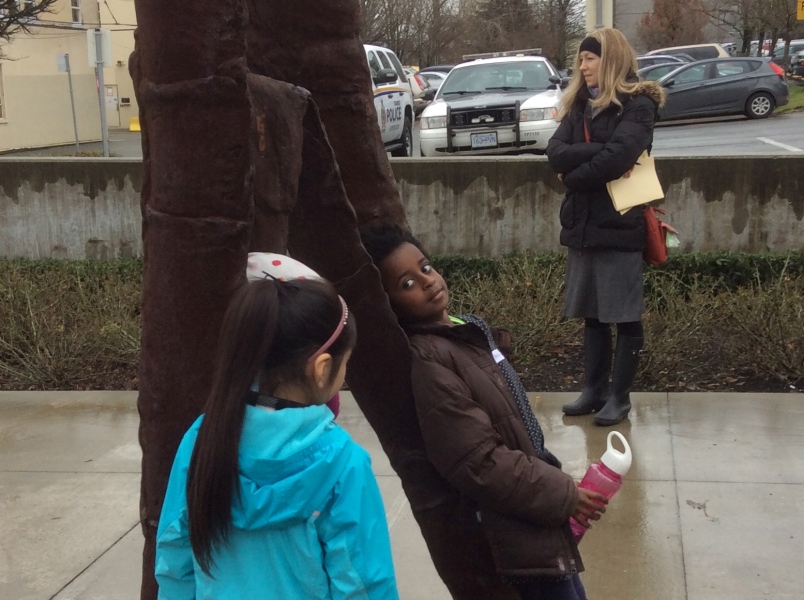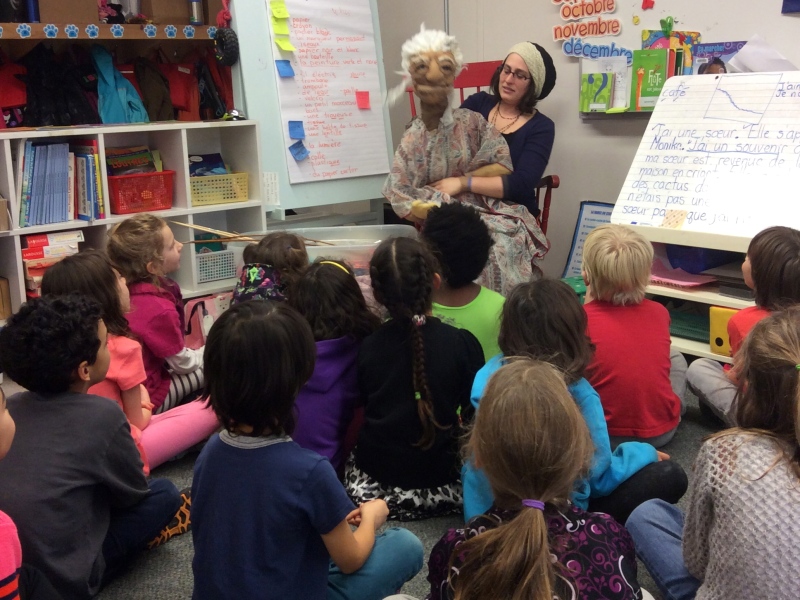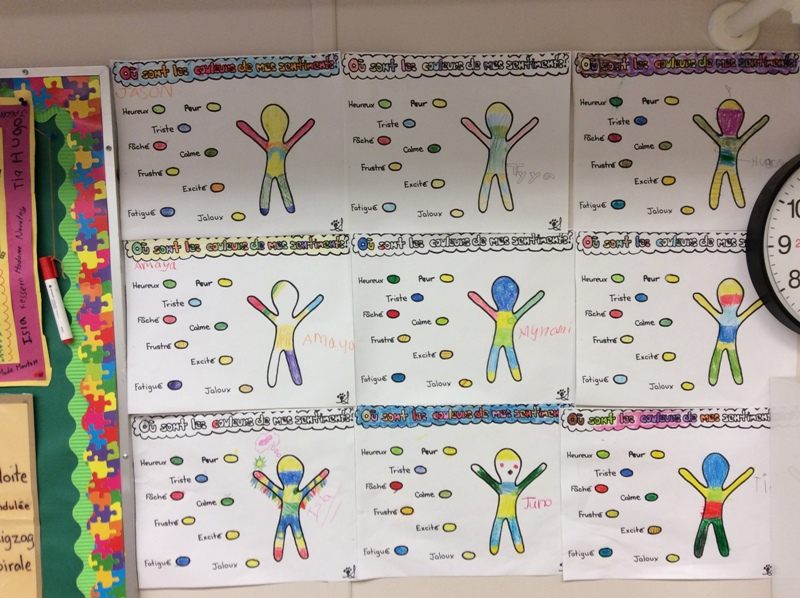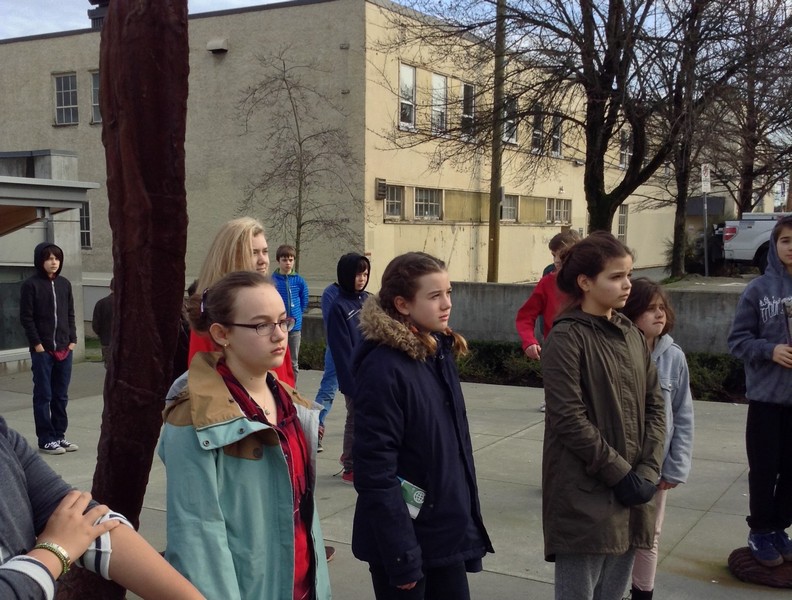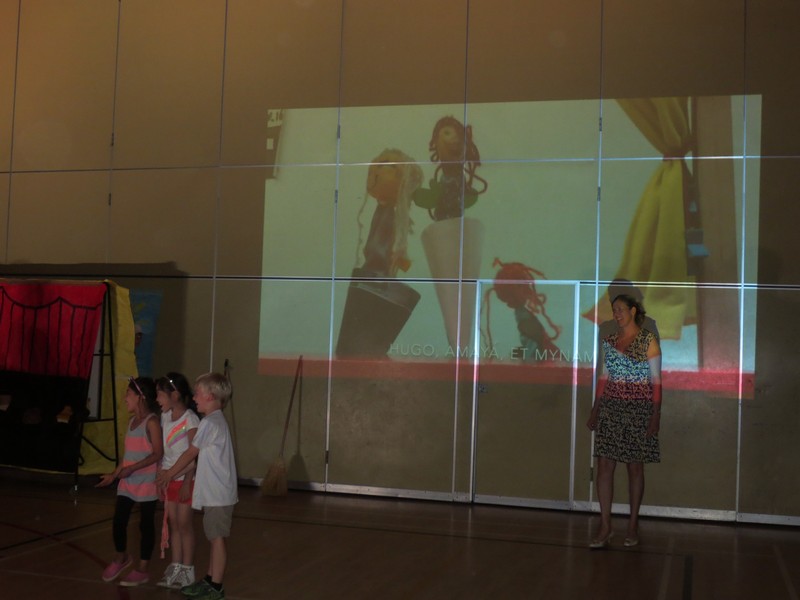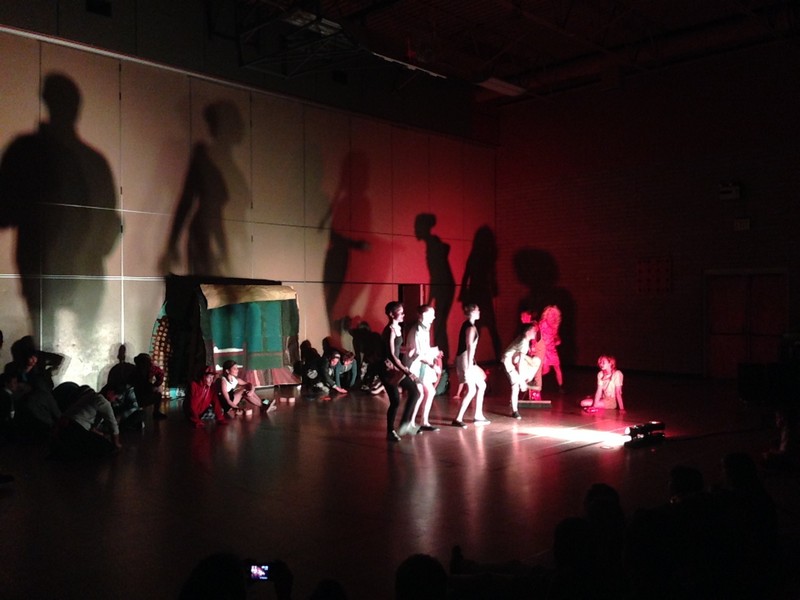École Bilingue: Toi & Me = Nous
Arts Education, Health and Career Education, Language Arts, Mathematics, Science, Social Studies
School: École Bilingue Elementary, Vancouver
Teacher: Gabriela Novotny, Olivier Salvas
Artist Collaborators: Julie Lynn Mortensen and Maggie Winston (Montreal)
Class: Grade 1 and Grade 7
Overview
This project connects (break down borders) between students from two age groups: a grade 1 class( 5-6 years old) and a grade 7 class (12-13 years old) from the same school, L’École Bilingue Elementary. Students participated in discussions, interviews, watch videos and represent their ideas through art in the exploration process. Through the exploration process, student reflection and feedback were recorded. The ideas and information gained in the process forms the foundation for the final project which is consisted of a grade 1 puppetry project that will lead into the Grade 7 play which will fully encapsulate their response to the guiding question. In the school, students are encouraged to lead activities to bring people together such as taking care of a community garden and to act as leaders for a change. Through the second term, students create various fine arts exhibitions to bring awareness to the project on our school community.
Connection to the Vancouver Biennale Exhibition
Our project is called Toi & Me = Nous and it has been inspired by both Human Structures Vancouver by Jonathan Borofsky and Walking Figures by Magdalena Abakanowicz. While observing Human Structures, we caught ourselves paying too much attention to the installations and not enough to the individuals that were apart. When we did focus on those individuals, we again caught ourselves stereotyping these people and putting them in categories of homeless people or elderly people. We realized that we had subconsciously created a border between them and us. We even decided that they were lonely because we assumed that these people don’t have what we have (and that we actually have what they do not have). Then, we noticed that we too often feel loneliness even if we technically fit in the social structure. Upon second thought, we realized that individuals that were homeless or elderly could be in fact not lonely and be happy with their lives. It is by looking at Walking Figures that we grasped on the fact that people all around us everyday are lonely, and this creates walls for and in between each other.
BIG IDEAS
People all around us everyday are lonely, and this creates walls for and in between each other.
Guiding Questions
In what way can understanding loneliness can break down walls between us?
Cross-Curricular Access
• Social Responsibility
• Visual Arts: Grade 1 students use a variety of image sources to create images and Grade 7 students: assess the relationship between selected artists and their social, historical, and cultural contexts; create a structured critical response to artworks and exhibitions; and develop group and individual exhibitions for particular audiences and purposes
• Drama: Grade 1 students use exploration and imagination to create drama; demonstrate co‐operation in drama activities; use voice to explore a range of ideas and feelings; and effect on classroom drama experiences.
Grade 7 students: explore a variety of issues and abstract concepts through drama (e.g., community, strength of character, control); perform drama for specific purposes and audiences
• Music: Grade 1 students participate in music activities from a variety of historical, cultural, and social contexts
• Math – Probability: Grade 7 students conduct a probability experiment to compare the theoretical probability (determined using a tree diagram, table or another graphic organizer) and experimental probability of two independent events
• Math – Geometry: Grade 1 students sort 3-D objects and 2-D shapes using one attribute, and explain the sorting rule; replicate composite 2-D shapes and 3-D objects; and compare 2-D shapes to parts of 3-D objects in the environment
Grade 7 students learned about the properties of circles; area of triangles, parallelograms, & circles
• Language Arts: Grade 1 students use strategies when interacting with others, including making and sharing connections; asking questions for clarification and understanding; taking turns as speaker and
listener; and writing a story from personal experience with a beginning, middle and end.
Grade 7 students respond in writing or representing by expressing feelings or thoughts about an experience or a text they have read, seen, or heard; incorporate new vocabulary into their own writing (e.g., “writing like a scientist,” adopting a character); and use various forms of response (e.g., written, visual, kinesthetic, electronic)
• Health & Career Planning: Grade 1 students identify ways families provide support and nurturing for growth and development (e.g., encouragement, advice, affection, sharing)
Grade 7 students demonstrate behaviours that contribute to the prevention of stereotyping, discrimination, and bullying and describe a variety of influences on relationships
• Science: Grade 1 students classify objects, events, and organisms and investigate changes to the properties of matter when it is heated or cooled—(connect to feelings of loneliness and non-loneliness)
Learning Process/Timeline
December 2014:
Mind Up activities to help students develop awareness skills of self and environnement.
January 2015
Visual Thinking Strategies (Inspired from the VTS website)
Visit to the installations
Filming of the grade 7’s and the of the grade 1s’s first impressions
Observation through physical movement
Quieting the mind-observation drawing, discussion (VTS), and back to drawing
Video taping responses: Grade 7’s thoughts on loneliness
What is loneliness in self?
Grade 1s and Grade 7s do a canvas art activity to represent what loneliness is to them
Grade 1s do a short write up in response to their artwork.
Grade 7s write a poem on the feeling explored in their painting.
The paintings and the stories will be displayed to begin school awareness of the project on loneliness.
February 2015
What is loneliness of other and with other?
Grade ones learn puppetry
Grade 7s find music on loneliness in French and study/present/respond to lyrics.
Grade ones participate.( maybe some of the songs will later inspire them with themes, language expressions, metaphors, ideas, or connections for performance)
Group collage of images of loneliness around them
Grade 7’s respond how do they see loneliness, what is loneliness to them, how can they represent loneliness by using key words only that will be displayed around the collage.
Qualitative and Quantitative Data on loneliness
Grade 7s collect data on loneliness. They watch movies, they interview people around them, they read books they listen to songs and they get inspired from art work. Grade 7s will share their quantitative data through charts, carrot diagrams, venn diagrams, mean, median and move. They also share their qualitative data through a journal entry.
Grade 1’s will learn one to two songs chosen by the grade 7’S students.
Throughout February /March
From the students’ answers,the teachers will book field trips, guest speakers and activities that fit with their description of loneliness
Grade 7’s begin to prepare and practice drama and to express notions of loneliness and of social rejection. Drama workshop to introduce how we embody characters to tell stories using body, voice and our imagination. Connect students to the work through Body, Voice, Props, Character, & Storybuilding. Establish a safe space free from judgement and ripe with support for the work to flourish. Introduce students to performance risks incrementally so one activity builds upon the other and they feel safe and engaged in the exploration. Connect students to the theme of the project and ability to actualize them in life as art. Early explorations of their relationship and understanding of loneliness.
Scriptwriting! Integrating the theme of loneliness into a pre-existing script of ANNIE. Weaving their words into the template of the script and finding the themes of overcoming loneliness in the story. Key components of show will be stomp rhythms and collective stops/sudden bursts of choreo.
Grade 1s and Grade 7 begin to recreate the Biennale installations and to incorporate them through the play.
Grade 1s start learning drama
April
Short Film:
Grade 7s help the grade 1s to write their puppet show.
Role-Play using the art work done inspired by the installation.
Second visit at the installations to give our point of view after going through the process.
Grade 7s continue to prepare the performance. Drama workshop to coach students how to work together to build their own physical choreography for Annie. Get them comfortable in their bodies, performing in front of each other.
Build stomp-style choreo for Hard-Knock Life. Find dance moves they all feel great doing and performing. Working together as a team. Each bringing their own moves to the plate.
May/June
Complete the short film for Grade 1.
Grade 7s continue to prepare for the performance. Build character so they become a truthful representation of the different people in ANNIE. Focus on the scenes and specifics of acting. Technique class!
Create the Grand Finale of the Play! Focus on learning how to speak loudly without yelling.
Late June 2015
Presentation of the short movie and of the play in front of the school in the day time and in front of the parents and the community in the evening.
Student Creation
Visual Art Exhibit, Puppetry and Drama
Reflection
Artist – Maggie Winston
Students in the Grade 1 class at École Bilngue Elementary school were inspired by the Vancouver Biennale sculptures, Walking Figures and Human Structures Vancouver to create a puppetry based program exploring “Loneliness”. After identifying characteristics of the sculptures students were able to recognize the ways the humans represented in these sculptures interacted or didn’t interact. This lead us to thinking about loneliness, and identifying circumstances in which each of us feel that we are together or separate from each other. Then, after a puppet styles demonstration the class collectively chose to create their own pop-up style puppets for their project. The pop-up style features one human figure that can move up and down, hiding inside it’s own container. The students picked this because it clearly showed how people can show themselves or hide themselves from others. On the outside of the puppets containers (cones) the students drew representations of their “Lonely places”, for example: starry nights, forests, the inside of a sharks’ mouth. I believe the making of the puppet and identifying how to represent loneliness in an artistic form was the most valuable learning in this process. While we did not get to performing a full puppet show during my residency, I believe that the students gained many skills utilizing problem solving, collaboration, “big thinking”/ representational thinking, and metaphor.
Artist – Julie Lynn Mortensen
It filled my heart to see them perform so well to such a fantastic and happy audience. They will never ever forget this day.
Thank you Oli, for making it all happen by writing to the Bienalle and requesting me as your partner in artistic exploration. It was, as always, an exceedingly profound pleasure to work with you. You are truly one of the finest teachers in any classroom anywhere. Your students are so ready to transition to the next step of their lives, with incredible ambition, creativity and confidence. And Katherine, at the helm of BIG IDEAS, thank you for making it all possible! You are the conductor of all the magic that has happened this year and I am so grateful you found me to join the orchestra.
Related Material
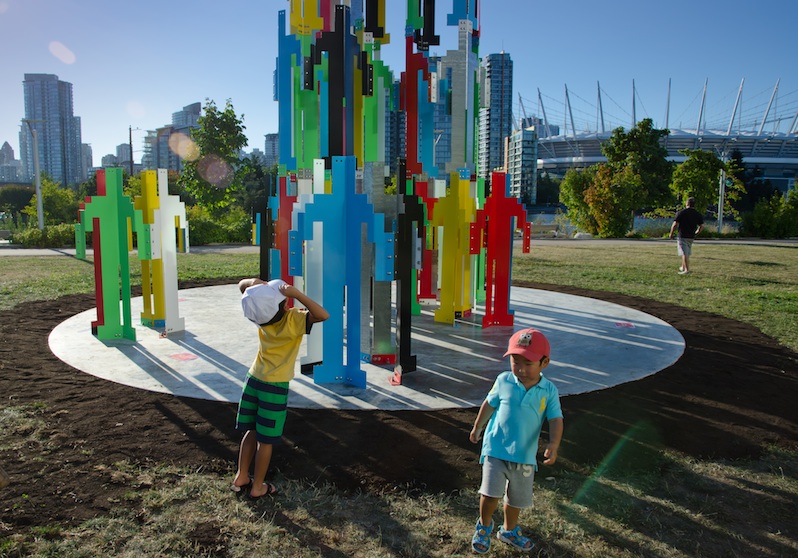 Human Interconnectedness
Human Interconnectedness